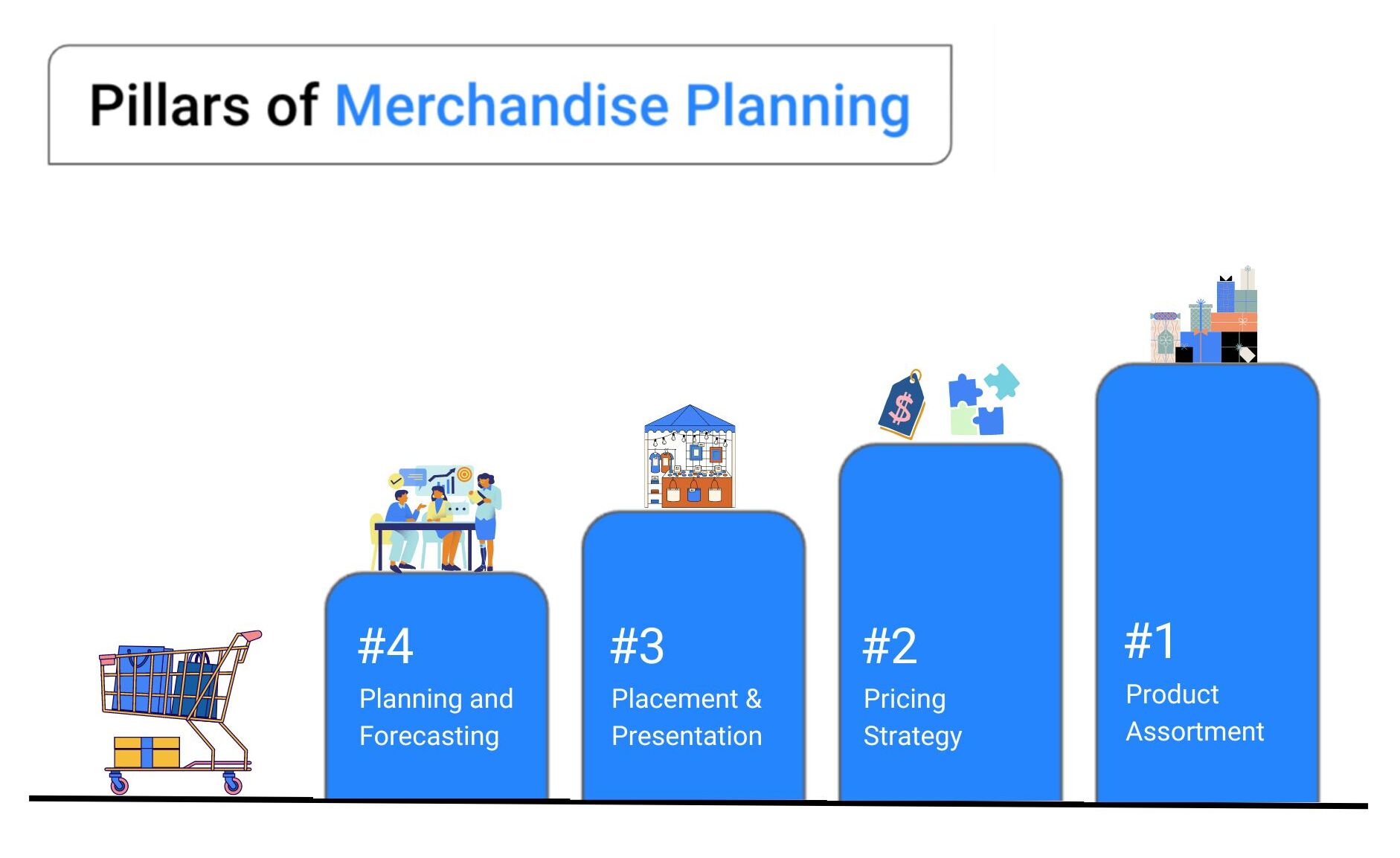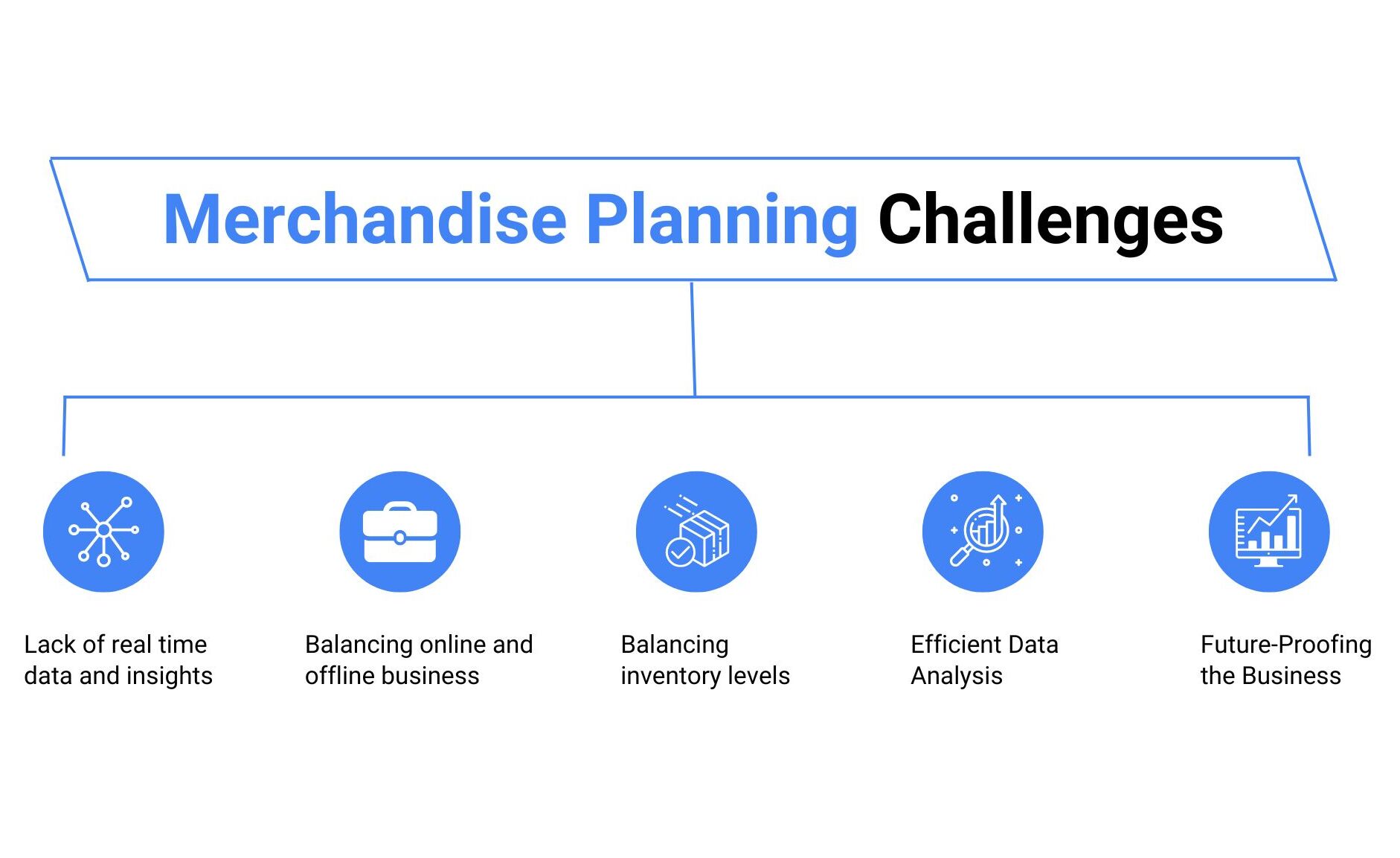
Transform Your Supply Chain Planning and Marketing Strategies with Google Cloud and SAP Integration

Transform Your Supply Chain Planning and Marketing Strategies with Google Cloud and SAP Integration
May 21, 2023 | Megha Aggarwal
Blog / Merchandise Planning with Gen AI: Drive Sales and Profitability
You cannot run a successful retail business from memory. – Josh Hartford
From forecasting to planning to inventory to customer experience, you need a unified system tracking everything and making intelligent recommendations.
Merchandise planning is not an exception. A well-trained, AI-powered solution can change the planner’s life drastically. Merchandising moves goods towards people. For that you need to be able to plan intelligently to put the right product, at the right price, at the right time, in front of the right people.
The secret of successful merchandising in 2023 is AI. The global AI in retail market is expected to grow from USD 4.84 billion to USD 31.8 billion, at a CAGR of 30.5% in 2021-2028 period (source).
Let’s see how Gen AI and large language models can be the driving force for the growth and profitability of your retail business.
Picture this: you have a store stocked to the brim with products. But, they sit untouched, collecting dust. A nightmare situation!
Avoid retail nightmares with the 4 pillars of merchandising.

The most challenging part of any retail business is the right product mix. You don’t want to run out of stock when there’s demand for the product. At the same time you don’t want to overstock the product to clear it at a huge discount later making a loss.
Creating a right product assortment is crucial for good customer experience and sales that go up month by month.
Tips for Product Assortment
➢ Know your target customer
➢ Keep a check on market trends
➢ Take seasonality into account
➢ Collaborate with the right suppliers
➢ Execute Inventory Analysis
➢ Analyze customer’s shopping habits and patterns
Automate Product assortment with Pluto7’s Retail Planning Solution.
One of California’s largest supermarkets was able to gain deeper, more realistic and prediction-based insights with Pluto7’s Retail solutions to improve inventory assortment. Read the case study.
Product price is the top factor that influences purchasing decisions. Before you start selling, you need to determine the worth of your product in a way that it drives profitability while remaining competitive in the market.
An effective price strategy takes into account market share, sales volume, business goals, revenue, promotions, dynamic pricing. Choose a pricing strategy that fits your business objectives.
How to choose a Pricing Strategy
➢ Value metric of the the product
➢ Production cost, overhead expenses, and other costs that business need to cover
➢ Pricing set by competitors
➢ Spending capacity of your market
The way you display your products in stores plays a huge role in attracting potential customers.
A well-thought out visual merchandising can boost sales, drive brand loyalty, and provide a memorable shopping experience.
Color psychology, visual hierarchy, store layout, product placement, packaging, signage, and other strategies add to shopper’s delight. It makes them remember you and come back to the store.
Placement techniques to drive sales
➢ Aesthetically appealing and innovative product display
➢ Signs that are easy-to-read Signs
➢ Group related items together
➢ Create a welcoming, friendly atmosphere
➢ Point-of Purchase (POP) Displays
Demand forecasting and planning are the core of any business. Knowing customer’s buying patterns and trends can help plan merchandise better. It will ensure optimal inventory levels, timely replenishment of products to meet customer demand.
Looking at loads of data and predicting future demand is not an easy task. It is not something that can be done using excel sheets and in closed meetings. Best retailers use Gen AI-powered demand planning solutions to combine their historical data with ever-changing market trends, datasets like weather, Consumer Price Index (CPI), Google Ad tech to accurately predict merchandise.
Benefits of Accurate Demand Forecasting
➢ Inventory Optimization
➢ Reducing problems of overstocking and understocking
➢ Reducing cost by eliminating unnecessary markdowns
➢ Improving customer experience
➢ Enhancing productivity
An American department store retail chain achieved 85% accuracy with their demand forecasting by leveraging Pluto7’s expertise and Google Cloud Platform. Read the case study.
CLICK HERE: To Transform your Merchandise Planning
Market fluctuation, changing customer preferences, reduced purchasing power, increased product variety, competition, material sourcing are some of the daily challenges in the life of a retailer. In addition, they need to deal with huge amounts of data, analyze it, make demand predictions, plan merchandise, plan assortment, manage inventory, all the while maintaining profitability.

Smart, advanced tools trained on historical data with added intelligence provide actionable insights that can take most of the load of planners. I will not say it would be as easy as sipping coffee and taking decisions but close to that.
AI-powered solutions keep learning and keep improving continuously. More you use them, the more helpful they become. In no time, you would be sipping coffee and making your business decisions. Checkout how they are solving common challenges of merchandise planners.
Consumer choice and preference changes frequently. It is difficult to keep up with that with legacy and spreadsheet like tools.
With DemandML from Pluto7, access over 250 external insights from Google Cloud. This includes Adtech data, trends, and consumer behavior. Demand ML enables businesses to gain deeper insights and make more informed decisions based on real-time data.
Customers today are looking for a seamless experience. Whether they are in store or online, they want to shop smoothly.
Gen AI-powered retail solutions can help centralize and analyze customer data to personalize marketing campaigns. It can help provide customer’s historical data and purchase patterns to make personalized recommendations and an overall delightful shopping experience.
Maintaining the right inventory level is one of the biggest challenges for any merchandise planner. Ideally, you should have accurate demand forecasting and replenishment data to avoid excess stock or out-of-stock situations.
Demand ML and Inventory ML from Pluto7 help you stay on the top of your inventory. Both these solutions leverage Gen AI and LLMs to recommend optimal inventory levels for different products.They provide real-time insights into inventory levels, generating alerts when inventory levels are running low and predicting when additional inventory will be needed.
Retailers face difficulties in analyzing large volumes of data efficiently. There is a lot of data to process – from sales, marketing, customers, trends and often this data resides in silos with no means of collaborating or deriving insights.
Pluto7’s Planning in a Box not only brings all the data in one place, it also gives dashboards and reports that assist intelligent decision making. With a chat like interface, it is like having a trusted, experienced colleague by your side.
The retail industry is more dynamic than ever. With the products overload in the market, consumers are spoilt for choice. Brand loyalty is decreasing. Consumers are moving toward personalization.
Reports say 80% of consumers expect a tailored shopping experience.
With an integrated retail planning solution, it is possible to track consumer’s activity, blend it with emerging trends, seasonalities, and their behavior. This helps generate insights with which planners can make their products visible to consumers as per their buying journey.
Pandemic in 2020, a wedged ship in 2021, recession in 2022, all of these have taken a toll on the retail industry. Retailers are facing continued challenges in 2023 with supply chain, excess inventory, high customer-return rates and reduced spending on goods.
Harnessing the power of Gen AI and Large Language Models, businesses can conquer the ever-present hurdles of the commercial world. By tapping into the boundless capabilities of AI, companies can unlock shopper insights, understand the intricate patterns of consumer behavior.
This invaluable knowledge not only promises to cut returns and chargebacks, but also offers a glimpse into shopper preferences and purchasing habits. Armed with this knowledge, merchandisers can gain an upper hand on competition. Gen AI can help businesses create new market opportunities, and reduce the problems of excess inventory.
Here’s a list of ways Gen AI can help merchandise planners:

If there have been ideas in your head that you wanted to implement for more sales, more customers, brand loyalty, now is the time to put them into action.
Planners are so engrossed in daily reporting and analyzing that there is no time for innovation. Delegate mundane tasks to AI. They are faster and more efficient.
Use your time to come up with new ideas on growing your business. Check the patterns, trends, buying behavior, sentiments generated by Gen AI-powered retail solutions and decide which new product should be added to your merchandise mix. Come up with engaging promotional activities based on this information.
Empower yourself to take data-driven decisions to maximize profitability and reduce risk.
Merchandisers need a control tower view for better planning. Unified data platforms can bring all the information a planner needs in one place. Build AI and ML on top of it, and you’ve got all you need to grow your business.
Through digital transformation, retailers can gain a comprehensive understanding of the financial implications of trade-offs and make informed decisions in their planning processes.
By embracing integrated merchandise solutions, retailers can shape the future of their business, foster collaboration and synergy across strategic, tactical, and operational levels.
Book a demo to evaluate your current processes and see how you can improve it to maximize profitability.

Without an accurate insight into demand, planning just cannot take off.
Traditional demand planning methods rely on historical data and statistical models, and may not be able to provide the responsiveness needed in today’s market. With constantly changing customer preferences, planners need more.
Merchandisers need real-time visibility into customer demand so that they can work on their plans and inventory levels accordingly. By incorporating data from a variety of sources, including social media, weather patterns, and economic indicators, demand sensing can provide a more accurate and comprehensive picture of demand.
This allows merchandise planners to make more informed decisions about production and inventory levels, as well as pricing and promotional strategies.
Read our case study: How An American retail chain achieved more than 85% accuracy.
Inventory management is going to be a big component in navigating through upcoming economic challenges. – Tae K. Chung, Senior VP, Republic Business Credit (Source)
Inventory management directly impacts the profitability, customer satisfaction, and overall operational efficiency. Effective inventory management ensures that the right products are available at the right time, avoiding stock outs and overstocks. It also helps in planning replenishment.
One of the merchandise planner’s responsibilities is to maintain optimal inventory levels. Gen AI systems by predicting demand can help them dynamically balance their inventory levels, saving cost and increasing profitability.
“We would need an army of data scientists to make faster decisions on pricing and inventory levels. With Google Cloud Platform machine learning and artificial intelligence, we don’t need that. We can make much faster pricing decisions to optimize profitability and move inventory.” – Deepak Mehrotra, Co-founder & Chief Adventurer, CDD
Read the full case study.
Assortment planning includes analyzing various factors such as customer demographics, historical sales data, market research, and competitor analysis to determine the optimal assortment of products to carry. This includes deciding on the right mix of brands, styles, sizes, colors, and price points.
The goal is to create a well-balanced product offering that meets customer needs, maximizes sales potential, minimizes stockouts, and differentiates the retailer from competitors.
Traditionally, merchandise planners have been using excel or spreadsheets to plan assortment. Gen AI and LLM based, integrated assortment solutions can process huge amounts of data from different streams to recommend successful assortment plans.
| Assortment Planning Parameters | Using Spreadsheets | Using Pluto7’s Gen AI-Powered Retail Solution |
|---|---|---|
|
Market Analysis |
No or limited access to historical data only |
Access to real-time customer preferences, buying trends, and competitor offerings |
|
Sales and Performance Analysis |
No or limited access to historical data only |
All information is available on a single platform. In addition, planners have access to seasonality, trends, PPI (Product Performance Index), Customer segmentation. |
|
Product Categorization |
Cumbersome and error prone |
Can automatically classify products based on their attributes, descriptions, images, and other relevant data. |
|
Product Selection |
Involve guesswork |
Data-driven decisions that consider customer demand, product popularity, profitability, supplier relationships, market trends, and customer feedback |
|
Range Optimization |
Involve guesswork |
Retailers can confidently create product variations, SKUs to strike a balance between providing sufficient choice to customers and avoiding excessive duplication or complexity. |
Still using Excels to create assortment plans?
Ease the planning process. Create better plans in no time.
Space planning essentially is hand holding your customers to reach your products. It is making use of the space allocated to you in the stores to achieve maximum visibility and sales.
81% of GenZ like to purchase in-store (source). A well-curated, distraction free store experience is what they are looking for.
Retailers must invest into Gen AI and LLM technologies to plan their store layout better. With such solutions they can improve product placement, improve brand recall, and increase sales volumes. Merchandise planners can utilize data on customer behavior, sales patterns, and inventory levels to enhance their retail space design techniques.
Read Case Study: Improve Omnichannel Retail shopping experience using Vision AI, and real time recommendations using ML.
A well-planned promotional strategy can effectively communicate your brand’s value proposition, generate excitement, and incentivize customers to make purchases.
To create a winning strategy, you need access to data and the power to understand that data.
Gen AI algorithms can analyze customer data, purchase history, and browsing behavior to segment customers into distinct groups based on their preferences and behaviors. This will help merchandise planners like you create targeted promotions.
75% of customers are likely to buy from retailers who send personalized recommendations (source). Personalized, targeted promotional campaigns resonate with specific customer segments and improve the effectiveness of marketing campaigns.
Tripify, a leading travel provider, improved their customer engagement by running personalized campaigns. Read the case study.
✤ Keep your customers happy. Understand what emotions trigger their purchase decisions. Hyper-personalize their shopping experience.
✤ Maintain good relationships with suppliers and other vendors. Employ an AI-powered supplier management platform that helps with supplier ranking, shortlisting, quality assurance.
✤ Stay updated with industry trends. Invest in a good tool to keep you updated with trends and how it impacts demand. Capture real-time insights and plug them into your IBP/ERP solution for better decision making.
✤ Maintain your inventory levels. Make sure you are not out-of-stock when the product is in demand. Forecast demand with the help of Gen AI and LLM based advanced systems, and dynamically balance your inventory.
✤ Optimize store layout for easy navigation and product visibility. Leverage tools like Vision AI that automatically optimizes shelf space.
✤ Create a seamless experience both online and offline. Customers should not feel disconnected when they visit your store and then check you out online. Embrace Gen AI-powered digital technologies.
✤ Regularly refresh product assortment to keep customers engaged.
✤ Provide excellent customer service and engage with customers proactively.
What is merchandise planning?
Merchandise planning is the process of strategically determining the right inventory levels, assortment, and allocation to meet customer demand, maximize sales, and optimize profitability in the retail industry.
What are the steps in merchandise planning?
The steps in merchandise planning typically include analyzing historical data, forecasting demand, setting sales targets, developing assortments, determining inventory levels, allocating products, and monitoring performance for adjustments.
What are the 5 R’s of merchandising?
The 5 R’s of merchandising are 1) right merchandise 2) right quantity 3) right time 4) right price 5) right place. This was defined by Paul Mazur in 1927.
What are the key elements in merchandise planning?
The key elements in merchandise planning are sales analysis, demand forecasting, assortment planning, inventory management, allocation and replenishment, pricing strategies, and ongoing performance monitoring and analysis.
What are the 4 P’s of merchandising?
4 P’s of merchandising are Product, Pricing, Placement, and Planning.
How does Gen AI improve merchandising?
Gen AI improves merchandising by generating realistic and visually appealing product displays, optimizing product placement, and creating personalized recommendations.
How do I enhance merchandising planning on SAP?
SAP has limited capabilities for real-time data processing and insights. Combining it with Google Cloud, BigQuery, AI/ML can give better insights on customer behavior, sales patterns, and inventory management.
Gen AI and Large Language Models are changing the way retailers work. Interacting with data and decision intelligence are the need of the hour.
Add these technologies to your daily work and future-proof your business. If you are not sure where to start, contact us. Register for our innovation workshop to explore the capabilities of Large Language Models for your business.
We have done some amazing work with Google Cloud and Gen AI in retail space. Check out the case study.
ABOUT THE AUTHOR
Megha Aggarwal is Marketing Executive at Pluto7 and an AI enthusiast. She is curious about how AI/ML are shaping different industries and loves to share her findings on the same. AI/ML are game changers for the businesses. Learn more about this emerging technology with Megha.
Connect with Megha on LinkedIn